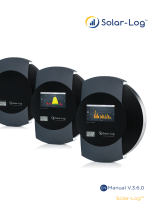
Phase balancing meters
4
Phase balancing meters
Basics
When dealing with energy meters, a distinction is made between balancing meters and non-balancing meters.
Today, balancing meters are used predominantly. This difference is particularly important if you both draw
energy from the grid and supply it to the grid, for example with a photovoltaic system. Another factor is that
symmetrical loading becomes very unlikely as soon as single-phase consumers are employed. The same
also applies to single-phase generators.
Users may be subject to disadvantages in the case of non-balancing meters, as the remuneration for deliv-
ered energy is usually significantly lower than the cost of consumed energy.
If both generation and consumption are three-phase and symmetrical, balancing meters plays a minor role.
If you only consume energy, you do not need a balancing meters.
Functional description
Balancing meters measure the current of the individual phases and multiply it by the measured voltage. The
resulting power values, whether consumed or delivered, are then offset against each other. The power of all
three phases is added together (L1+L2+L3 = sum). Delivered power is given a negative sign, consumed power
a positive sign. This means that either the power consumed or the power delivered will necessarily equal zero,
depending on whether more is generated or consumed. The respective power is then multiplied by time and
the result is attributed to the energy consumed or delivered, depending on the sign. A non-balancing meters,
on the other hand, shows both consumption and generation in this same case. It only adds up consumed
and delivered power separately and bills the one and credits the other according to the energy consumed
or delivered, without first offsetting them against each other. This is illustrated by the following examples.









